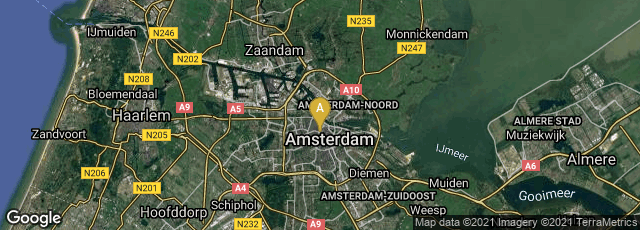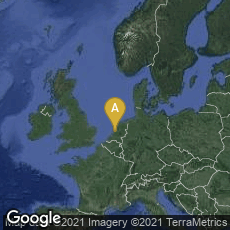

A: Amsterdam-Centrum, Amsterdam, Noord-Holland, Netherlands
In Amsterdam Dutch anatomist Frederik Ruysch published Thesaurus anatomicus in ten parts from 1701 to 1716, and the first and only part of his Thesaurus animalium in 1710. An index to the Thesaurus anatomicus appeared in 1725.
Probably the most original artist in the history of anatomical preparations, Ruysch enjoyed making up elaborate three-dimensional emblems of mortality from his specimens. These fantastic, dream-like concoctions constructed of human anatomical parts are illustrated in the Thesaurus on large folding plates mostly engraved by Cornelis Huyberts, who also engraved plates for the painter Gérard de Lairesse, illustrator of Govert Bidloo’s anatomy. In their dreamlike qualities many of the plates depicting the preparations reflect surrealism centuries before surrealism became fashionable. Ruysch’s Thesaurus anatomicus and his Thesaurus animalium describe and illustrate the spectacular collections of “Anatomical Treasures” which he produced for display in his home museum between 1701 and 1716 using secret methods of anatomical injection and preservation.
Ruysch's unique anatomical preparations attracted many notables to his museum, including Czar Peter the Great of Russia, who was so fascinated with the preparations that he attended Ruysch’s anatomy lectures, and in 1717 he bought Ruysch’s entire collection, along with that of the Amsterdam apothecary Albert Seba, for Russia's first public museum, the St. Petersburg Kunstkammer. Over the years most of the dry preparations in St. Petersburg deteriorated or disappeared, but some of those preserved in glass jars remain. A few later specimens by Ruysch, auctioned off by his widow after his death, are also preserved in Leiden. Because most of the preparations did not survive, Ruysch’s preparations, and his museum, are known primarily from these publications.
Ruysch's methods allowed him to prepare organs such as the liver and kidneys and keep entire corpses for years. He used a mixture of talc, white wax, and cinnabar for injecting vessels and an embalming fluid of alcohol made from wine or corn with black pepper added. Using his injection methods Ruysch was the first to demonstrate the occurrence of blood vessels in almost all tissues of the human body, thereby destroying the Galenic belief that certain areas of the body had no vascular supply. He was also the first to show that blood vessels display diverse organ-specific patterns. He investigated the valves in the lymphatic system, the bronchial arteries and the vascular plexuses of the heart, and was the first to point out the nourishment of the fetus through the umbilical cord. Ruysch's discoveries led him to claim erroneously that tissues consisted solely of vascular networks, and to deny the existence of glandular tissue.
Impey & Macgregor (eds.) The Origins of Museums (1985) 55-56. Hook & Norman, The Haskell F. Norman Library of Science and Medicine (1991) no. 1875. Rosamond Purcell & Stephen Gould, Finders, Keepers: Eight Collectors (1992) chapter 1 reproduces spectacular color images of Ruysch’s preparations from Czar Peter’s Wunderkammer, and Leiden. Roberts & Tomlinson, The Fabric of the Human Body (1992) 290-98.